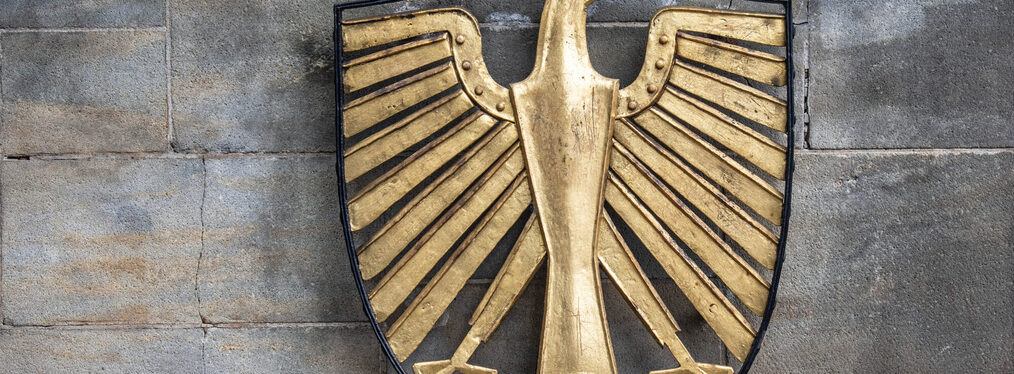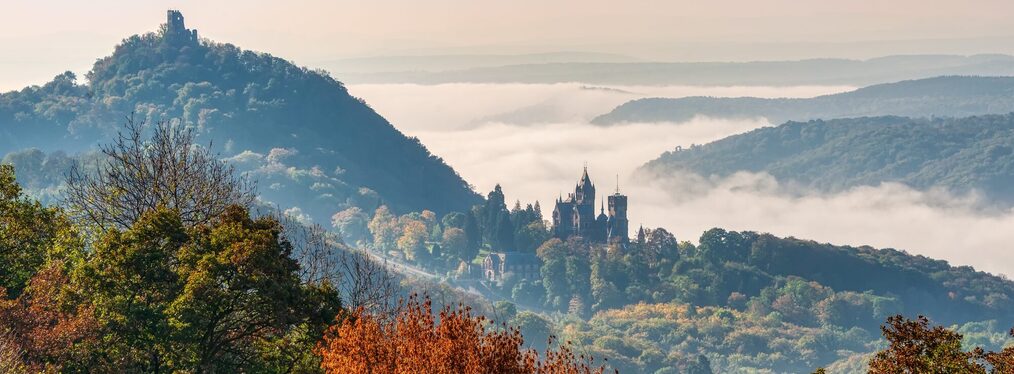We recommend: Bonn Regio Welcome Card
This card offers you a good-value and convenient way to see a great number of attractive places in Bonn and its environs. It includes free entry to many museums and reduced rates for sights as well as for leisure and wellness activities. Free public transport to all WelcomeCard attractions is also included.
The Bonn Regio Welcome Card is on sale at Bonn-Information as well as in many Hotels and can also be ordered online.
Old Town Hall
Built between 1737 and 1738 under the rule of Elector Clemens August. The steps leading up to the building are world-famous due to numerous receptions for State guests. Representation rooms are accessible on selected dates. Announcements can be found in the press.
Subway: 16, 63, 66 - H: Universität/Markt
Old Town Hall Association
Since 2009, the Old Town Hall Association has made it its task to permanently preserve and maintain the building under monument preservation aspects. Thus, the restoration of tapestries and oil paintings, the coat of arms, the staircase railing at the market and the purchase of the lights in the representation rooms could already be financed.
- Location
Location
Old Town Hall
Markt 1
53111 Bonn
Beethoven House
University of Bonn
Regina-Pacis-Way 3, 53113 Bonn
The University of Bonn, the former electoral residence, was founded in 1818 by King Friedrich-Wilhelm III. The long east wing of the building reaches almost to the Rhine. A gilded archangel flies in splendor over the ‘Koblenzer Tor’ (Coblenz Gate), which was designed by Michel Leveilly and built into the impressive façade of the gate.
Bonn’s Egyptian Museum is situated above the Coblenz Gate and boasts an Egyptology collection of about 3,000 objects from 4000 BC to 300 AD.
The Hofgarten park is adjactent to the main building of the university and the Academic Art Museum, which features, among other things, one of the world´s largest collections of plaster cast antique sculptures.
Subway: 16, 63, 66 - H: Universität/Markt
Poppelsdorf Palace and the Botanical Garden of the University of Bonn
Meckenheimer Allee 171, 53115 Bonn
The former summer residence of Elector Clemens August is situated at the end of Poppelsdorfer Allee and has housed the University of Bonn´s natural science collection since 1818. It ist home to the Museum with an impressive collection of precious stones and meteorites.
The Botanical Gardens at the palace are among the oldest in Germany and have one of the most extensive collections of plant species in Germany, with a stock of 11,000 different species in eleven greenhouses. The highlights include the largest water lilies in the world, the leaves of which can bear a weight of 80 kg and the titan arum, the world´s largest flowering plant.
Opening hours Botanical Garden: Apr-Oct: Sun-Wed, Fri 10-18 h, Thu 10-20 h, Sat closed. Nov-March: Mon-Fri 10-16 h.
Bus: lines 601, 602, 603 and 631 - H: Botanischer Garten
Schumann´s House
The building at 182 Sebastianstraße in Bonn-Endenich, where Robert Schumann spent the latter years of his life, today houses the City of Bonn music library and includes, of course, the Schumann memorial rooms.
The history of this house built in neo-classical style goes back to the time of the last elector of Cologne, Max Franz. In those days it served as the country seat of the electoral chamber councilor and mayor Matthias Joseph Kaufmann. In 1844 it became part of a mental institution run by psychiatrist Dr. Richarz, to whom Schumann turned for treatment in 1854. Schumann’s mental illness had started during his successful work as director of music in Düsseldorf. Robert Schumann remained in Dr. Richarz’s mental institution until his death and was only able to leave it very occasionally for walks in the vicinity.
On the occasion of one of the visits by young Johannes Brahms, his way also took him to the Beethoven monument on Bonn’s Münsterplatz. By an ardent appeal for donations published in the ‘Neue Zeitschrift für Musik’ (New Music Journal) in 1836, Schumann had greatly contributed to the setting up of this monument. After a brief reunion with his wife Clara, Schumann died in the afternoon of 29 July 1856. His body was laid to rest in the Old Cemetery in the presence of a large gathering of friends and local citizens. In 1880 the monument to Schumann, designed by Adolf Donndorf and donated by friends and admirers, was unveiled here during a Schumann festival in the city.
As early as in 1926, medical consultant Dr. Kellner had suggested the creation of a Schumann memorial at the house in which the composer died in Bonn-Endenich. A plaque donated by the Schumann Society in Zwickau, Schumann’s birthplace, was placed there. The building was severely damaged during World War II. After some fierce public discussion the demolition of the house was prevented and the building was restored. On 12 May 1963 the two Schumann memorial rooms on the first floor containing documents, pictures and letters from Robert and Clara Schumann and from their friends were opened to the public.
As a significant link with these rooms, the rest of the house is devoted to the Bonn municipal music library. With its roughly 50,000 books, music scores and recordings, this library is immensely popular with musicians and music lovers in Bonn and the surroundings.
The house today has become both a memorial to a great composer and a center of learning. It has a vivid influence on the musical life in the city thanks to the house concerts held here for the promotion of Schumann’s piano and chamber music. Schumann’s house is a much frequented center of music in Bonn.
The Music library and the Schumann memorial rooms are open to the public as follows:
Tuesday, Wednesday, Thursday, Friday
11 a.m. – 1.30 p.m. | 3 p.m. – 6 p.m.
- Location
Location
Schumann´s House
Sebastianstraße 182
53115 Bonn
Southern town
The Südstadt quarter, situated south of the city, between Regina-Pacis-Weg, Poppelsdorfer Allee, Reuterstraße, Kaiserstraße, Weberstraße and the Rhine, is often referred to (along with Bonn´s Weststadt) as the largest connected and preserved Wilhelminian quarter in Germany. The many restaurants and bars contribute to the quality and popularity of this lush green residential quarter.
Sterntor
The Sterntor gate on the northern site of Bottlerplatz is a testimony to the city´s medieval fortifications and consists of the remain of the original Sterntor, what is left of the city walls and an old half tower.
Minster Basilica with cloister
Schwarzrheindorf Church
Dixstrasse 41, 53225 Bonn
The Doppelkirche Schwarzrheindorf consecrated in 1151 is an architectural rarity. The octagonal opening between the Lower and the Upper Church is reminiscent of the octagonal Palatine Chapel in Aachen. Its distinctive feature are the two naves, one superimposed on the other, each with an altar of its own.
Opening hours: outside church Tue-Sun 9-17 h,
Oberkirche Sat, Sun 9-17 h
Bus 550, 640 - H: Schwarzrheindorf-Kirche
Rhine promenades, Rheinaue Leisure Park and Alter Zoll
Bonn´s Rhine promenades are among the most beautiful in Germany. Rheinaue Leisure Park, site of the Federal Horticultural Show (BUGA) in 1979, offers an extensive network of paths and tracks. Some of its main attractions are the Japanese Garden and a large boating lake.
The former tolling station „Alter Zoll“ offers a wonderful panoramic view of the Siebengebirge.
Godesburg
Auf dem Godesberg, 53177 Bonn
The first of the romantic castles on the Rhine. Work started on the construction of Godesburg Castle in 1210. The castle was a favorite retreat of the Electors of Cologne in the Middle Ages and is today a restaurant and popular viewing point. Climb to the castle’s 32 meters high keep.
Opening hours: Visit of the Michaelskapelle
Apr.-Oct.: daily 8-17.30 | Nov.-March: daily 8-16 h
Subway: 16, 63 - H: Plittersdorfer Strasse
Post Tower
Charles-de-Gaulle-Strasse 20, 53113 Bonn
At 162.5 meters, the Post Tower, built between 2000 and 2002, is the tallest office building outside Frankfurt am Main and serves Deutsche Post DHL as global headquarters. The building can be visited as part of a guided tour.
Bus: lines 610, 611 and 630 | H: Post Tower
Kreuzbergkirche
Stationsweg 21, 53127 Bonn
The Kreuzbergkirche is situated above the city, in the district of Ippendorf. It belongs to the rococo ensemble of the era of the Princes Elector and is particularly known for the Holy Staircase, which were planned by the famous master builder Balthasar Neumann. The Holy Staircase is opened every year on Good Friday.
Opening hours: daily from 8am to 8pm| Heilige Stiege: summer time 9am to 6pm, winter time 9am to 5pm
Bus: Line 602 and 603 - H: Melbbad
Old Cemetery
Bornheimer Straße, 53113 Bonn
Sepulchral monuments of great artistic value and magnificent old trees make a visit worthwhile. Famous personalities have found their final resting place in Bonn’s Alter Friedhof (Old Cemetery)
Visitors can explore the cemetery on their own or as part of a guided tour.
Opening hours: summer time 7-20 o'clock, winter time 8-17 o'clock
Train: 66 | H: Stadthaus

